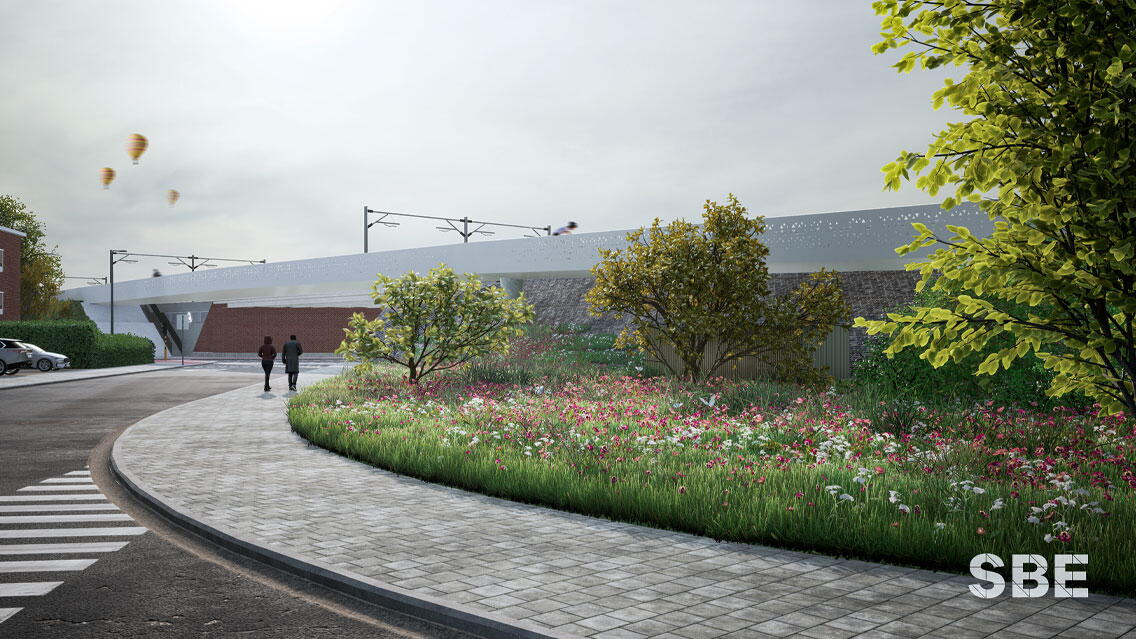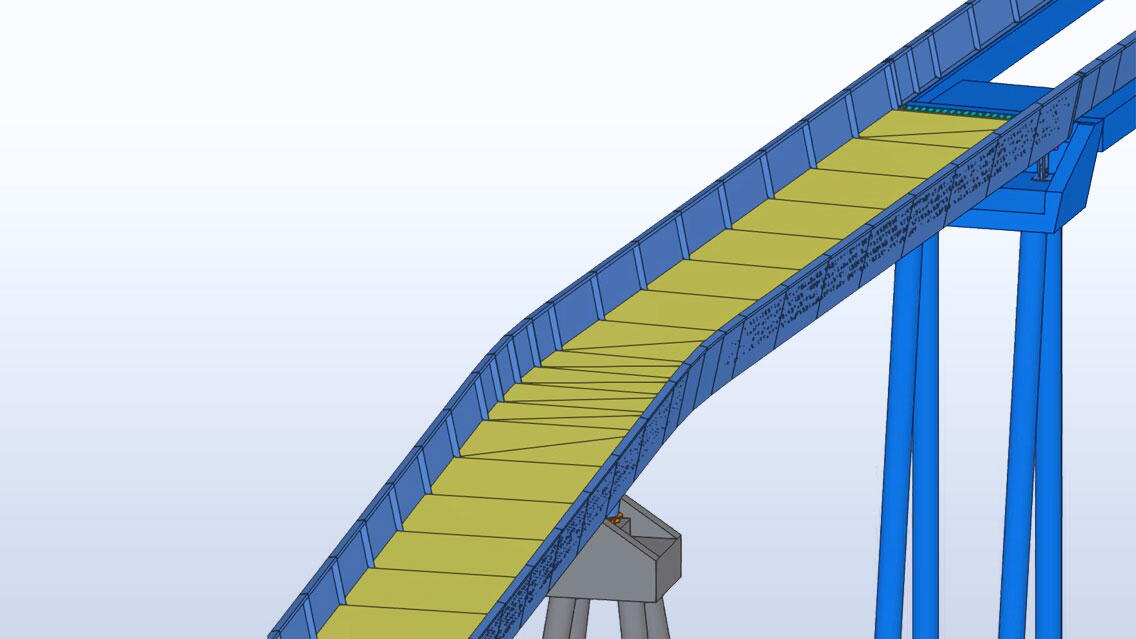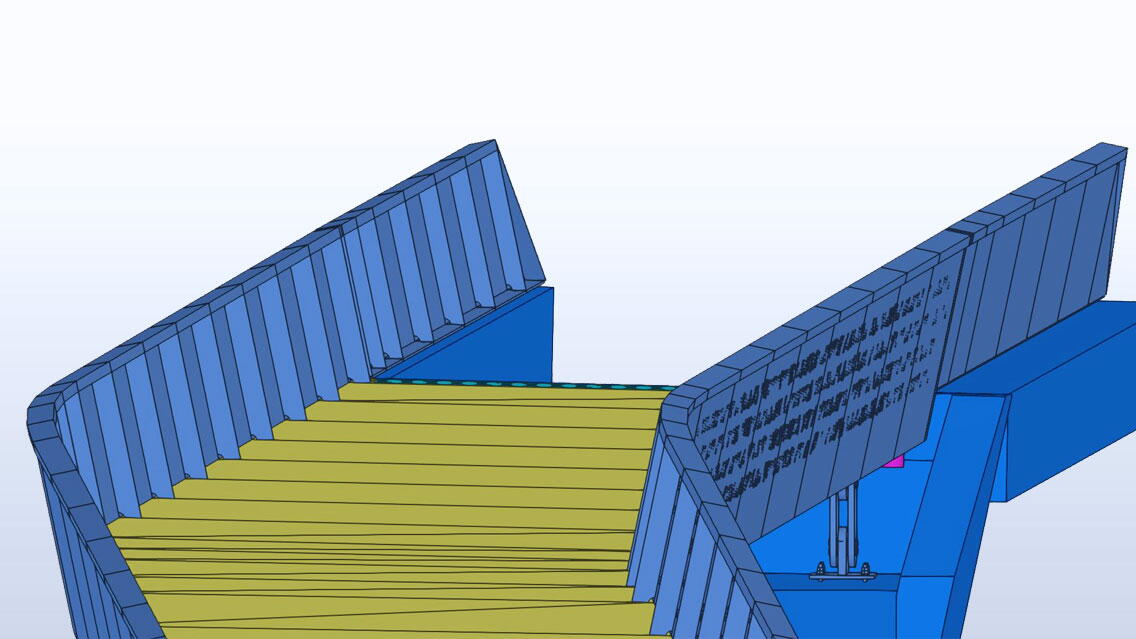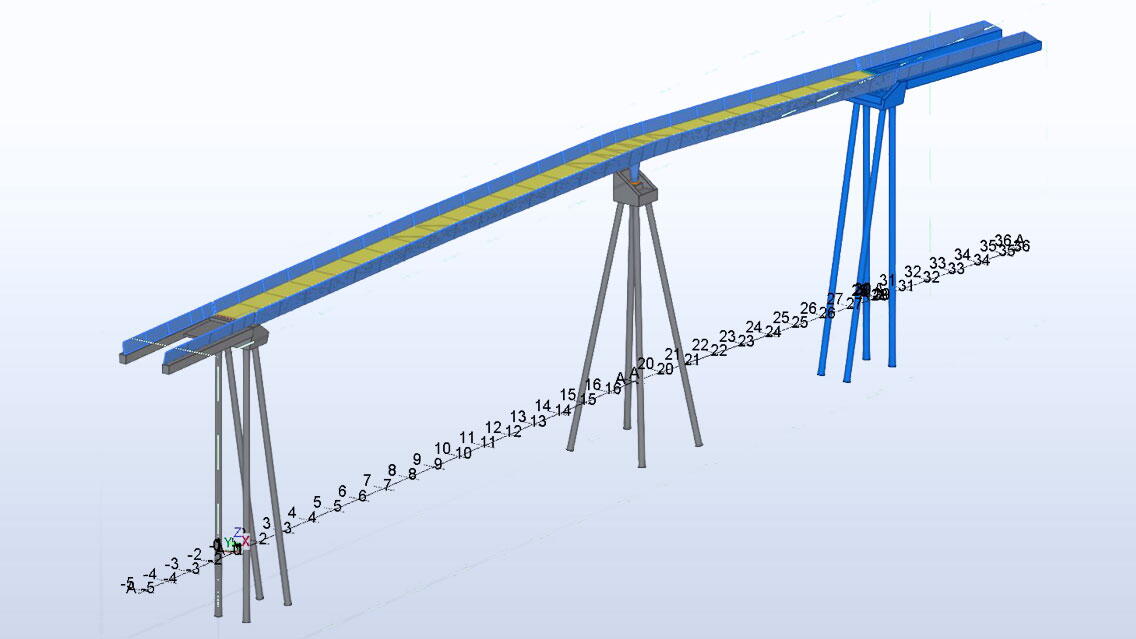Everywhere in Flanders, substantial investments are being made in new cycle highways. For the construction of the F4 cycle highway between Ghent and Antwerp, the current section near Sint-Niklaas creates an unsafe situation for soft road users. The route will therefore be adapted so that it runs parallel to the railway line, with a grade-separated junction at Vijfstraten and a level junction at Nieuwe Molenstraat. Thanks to its integrated approach, SBE has been chosen to take on the entire design study.
The proposed route is an almost straight, above-ground connection that guarantees optimal comfort for the cyclist. Different variants have been developed in respect of cycling comfort, as well as flow, cycling safety, spatial impact, legibility, and timing/feasibility.
The design of the cycle bridge strives for an elegant, slender construction, which turns the span of 93 meters into a flowing, comfortable movement. This is where architectural and technical design goes hand in hand. The steel bridge is designed as a single U-shaped profile with a continuous transverse section. Each architectural component is also used to provide added value in terms of stability. For example, the parapets have decorative perforations or are laser-cut, considering the forces at work. To achieve the desired slenderness and to maximize the free height under the bridge, an elegant pillar is provided after the span of 60m over Vijfstraten.
The section is located within dense urban surroundings next to a railway embankment. Wherever possible, a natural embankment is provided. Overgrown with local partly shrub-like plants, it serves as a green vein in the otherwise harsh landscape. Only in places where this is not possible or desirable due to lack of space will a natural embankment be replaced by a supporting foundation. This supporting foundation will be developed as a green element based on reinforced soil and the use of geogrids and geocells. This has several advantages. The most obvious is to continue the line of green embankments in these supporting foundations so that for the neighboring plots, there is a continuation of the landscape. There is also no risk of damage to the existing retaining wall because of vibrations during construction. Any necessary checks during work in respect of possible items on the track are carried out in consultation with Infrabel.
Approach
The entire bridge has been drawn and calculated by various engineers and BIM designers. The bridge is parametrically designed using the software programs Rhino 6 & Grasshopper. This model is linked to the SOFiSTiK calculation model but also to Tekla, Revit, and Civil 3D.
The new design and the 3D alignment have been drawn in Civil 3D. This data was used in Rhino 6 and Grasshopper to build the other geometry around it. This geometry and data were then used in the calculation model in SOFiSTiK and Tekla to generate the steel bridge and formwork. By working with one central model, adjustments can be made to the design very quickly.
By working out this project completely in 3D and using the appropriate data, it is very easy to request quantities of material from the tendering phase. It also allows us to use these models as a source for our visualizations, and they are also the basis for our complete BIM model. Working according to the BIM method was central throughout the design. The reuse of models and data and a central source of information & communication were essential in supporting this project.
The next step
What makes the Vijfstraten bicycle bridge project so special? What was our ambition to go that "extra mile"? Well, we were asked to take the local residents and stakeholders into our story and let them experience the future design in the best possible way. We often use 4D animations & 3D visualizations for this, which clearly shows the impact on the current environment. For the bicycle bridge Vijfstraten we wanted to add an extra dimension to that experience; let the local residents & stakeholders cycle around the design virtually. The entire BIM model is linked to our own developed bicycle simulator.
On the bicycle simulator, somebody virtually cycles over the future bicycle bridge. Because we have linked the data from the BIM model to it, they feel the correct resistance of the designed route. They also have the possibility to look around in the environment while cycling by using a VR headset. The entire BIM model has been optimized into a visualization model, and we have paid the necessary attention to the current surroundings and implantation of the project within a certain radius around the project so that this is also recognizable to everyone.




